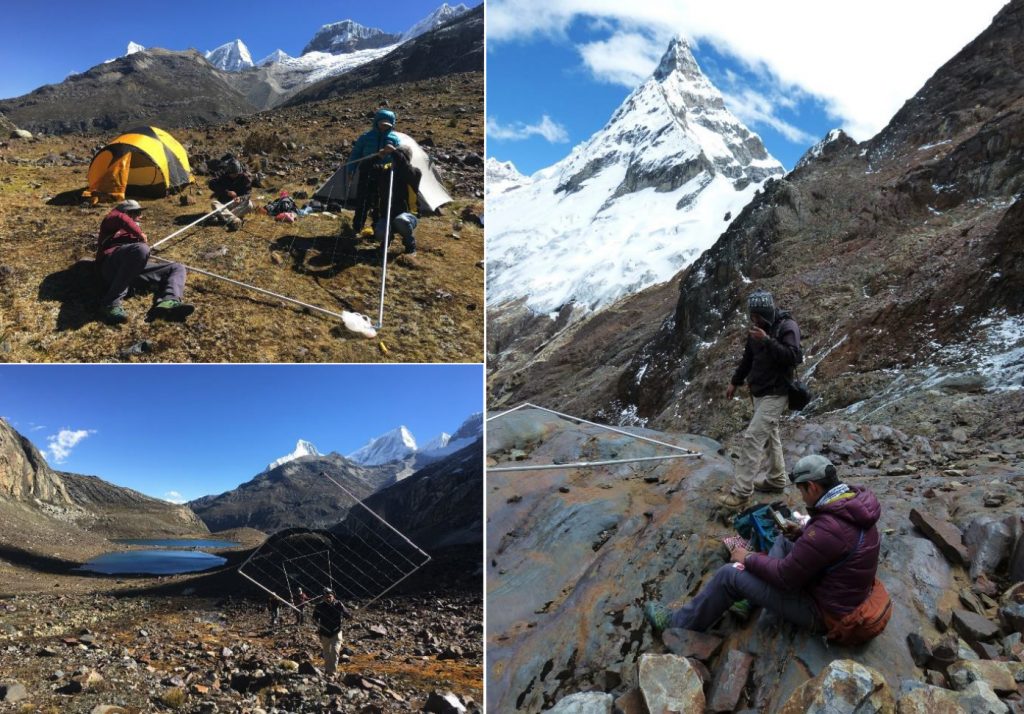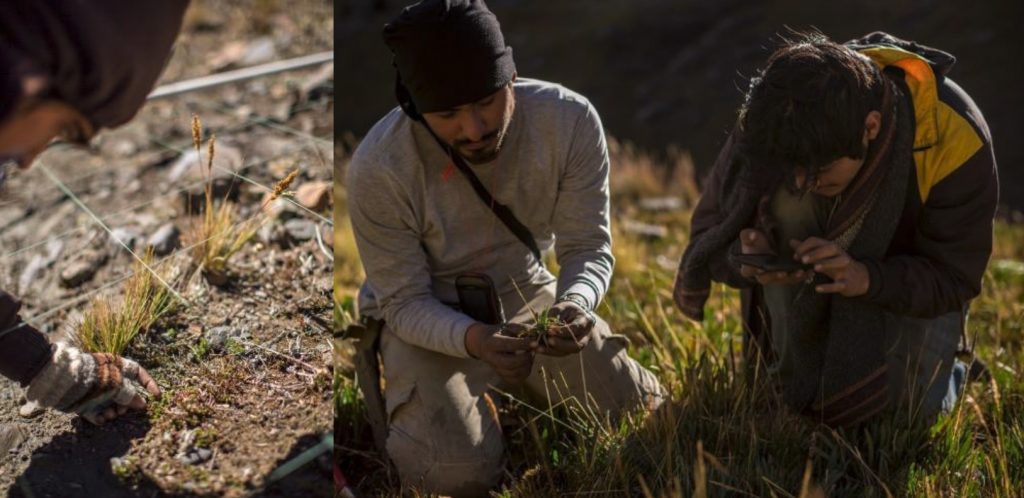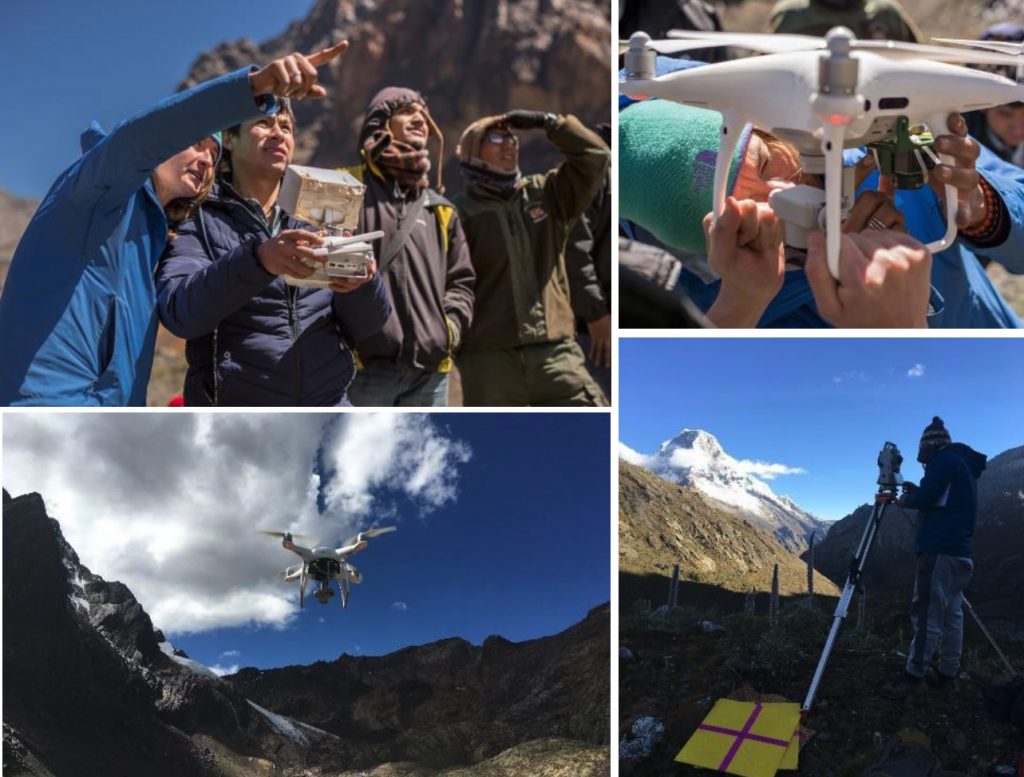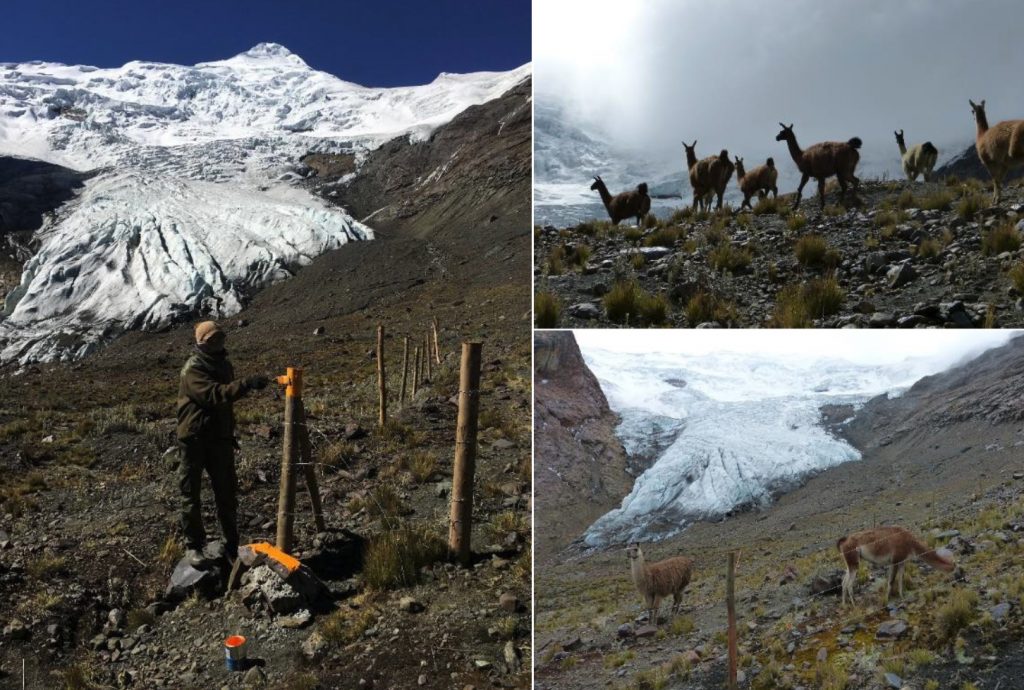Anaïs Zimmer 2019 Field Report
Anaïs Zimmer, PhD Student, Department of Geography and the Environment, University of Texas at Austin
Project: Alpine ecosystems and deglaciation in the Tropical Andes and French Alps
My long-term research goals are to examine the future of the periglacial environment and how land management and ecosystem rehabilitation can reduce risk vulnerability and enhance climate resilience. Part of my doctoral dissertation focuses on the study of primary succession in recently deglaciated landscapes (70-80 years) and periglacial ecosystem formation. This work is a biogeographical comparison between two mountain systems: The Peruvian Tropical Andes and the French Alps and relies on both empirical and experimental approaches. I examine how physical, ecological, and social processes interact to drive ecosystem changes in alpine proglacial landscapes and what these tell us about adaptation to sustain livelihoods and downstream services in future glacier free valleys.
The empirical approach is applied in both mountain systems and at multi-scale. We combine in situ observations and measurements (i.e., floristic survey, soil moisture, soil temperature, roughness, and landform identification) with high-resolution aerial imagery acquired by a drone, i.e., unmanned aerial vehicle (UAV). The experimental approach is a grazing experiment set up at the foot of the Uruashraju glacier in the Cordillera Blanca, Peru, using Lama Glama, an Andean Camelid.

Last summer to start my first field campaign as a Ph.D. student, I led research teams to both the Andes and Alps. We performed floristic and geomorphological inventories in our seven glacier forelands: Uruashraju, Yanamarey, and Broggi in the Cordillera Blanca in Peru, and the Gebroulaz (Vanoise massif), Glacier Blanc (Ecrins massif), and the Tour and Pelerins (Mont-Blanc massif) in the French Alps. Across postglacial soil/ ecosystem chronosequences—from a series of plots differing in age—starting in 1970 at the acceleration of glacier retreat, we surveyed a total of 396 plots (2x2m). From these plots we have collected floristic data (i.e., species, height, cover, fertility, and spatial association), took Red-Green-near-Infrared Photographs, and surveyed geomorphological characteristics (i.e., slope, aspect, landform, geomorphic processes, coarse elements). Several grants, including the CLAG Field Research Award, made this work possible.

The first part of this fieldwork campaign was carried out in the Cordillera Blanca in Peru. We were based in the city of Huaraz for 2 months, between May and July 2019. There we carried out the sampling in our three Andean Postglacial chronosequences: Broggi, Yanamarey, and Uruashraju, and we set up the Lama Glama grazing experiment at the foot of the Uruashraju glacier.Similar work was carried out in the French Alps between July and August, where we studied four glaciers forelands: the Gebroulaz Glacier in the Vanoise National Park, the Tour and Pelerins glaciers in the Mount Blanc Massif, and the Glacier Blanc foreland in the Ecrins National Park.

I am incredibly grateful for CLAG’s support, which makes this first field campaign possible.
I am now analyzing the data collected this summer and I hope to obtain preliminary results for our publications at the beginning of 2020. As well we start to work on the soil samples from the French Alps in the laboratory. The soils from the Cordillera Blanca are stored in the Ecology department of the History National Museum of Lima and have to be sent this week to the University of Austin Texas.

Additionally, I will travel to Peru at the beginning of January, following the CLAG Conference in Antigua, to supervise the llama grazing experiment and collect some additional soil samples for environmental DNA analysis. In the Alps, we worked in collaboration with the University of Milan, Italy, where I learned how to sample proglacial soils for eDNA analysis. I will replicate the sampling method in our proglacial terrain in Peru this winter and send the sample to Milan for analysis.
Please see the full report for more details.


















